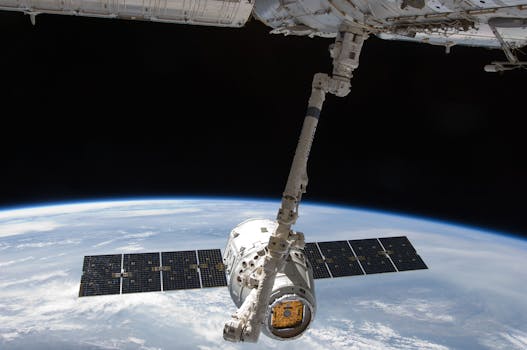Connecting the Globe: The Impact of Orbital Technology on Global Communication

Connecting the Globe: The Impact of Orbital Technology on Global Communication
Orbital Technology has revolutionized the way we communicate with each other, enabling people to connect with each other from anywhere in the world. With the help of satellites and other orbital technologies, we can now communicate with people in remote areas, access information from anywhere, and conduct business globally.
Orbital Technology has had a significant impact on global communication, enabling the creation of global networks that can connect people and devices from all over the world. This has enabled the growth of international business, global commerce, and international relations. Orbital Technology has also enabled the creation of new services such as satellite television, satellite radio, and global positioning systems (GPS).
The History of Orbital Technology
The history of orbital technology dates back to the 1950s, when the first satellites were launched into space. The first satellite, Sputnik, was launched by the Soviet Union in 1957, and it marked the beginning of the space age. Since then, thousands of satellites have been launched into space, and they have played a crucial role in global communication.
In the 1960s, the first commercial satellites were launched, providing telecommunications services to people around the world. The first geostationary satellite, Syncom 2, was launched in 1963, and it enabled the transmission of television signals across the Atlantic Ocean. The first mobile satellite system, Marisat, was launched in 1976, and it enabled ships and aircraft to communicate with each other.
The Impact of Orbital Technology on Global Communication
Orbital technology has had a significant impact on global communication, enabling people to connect with each other from anywhere in the world. With the help of satellites and other orbital technologies, we can now communicate with people in remote areas, access information from anywhere, and conduct business globally.
Orbital technology has also enabled the creation of new services such as satellite television, satellite radio, and global positioning systems (GPS). These services have revolutionized the way we live, work, and communicate with each other. For example, satellite television has enabled people to access a wide range of channels and programs from around the world, while GPS has enabled us to navigate our way around the world with ease.
Conclusion
In conclusion, Orbital Technology has had a profound impact on global communication, enabling people to connect with each other from anywhere in the world. With the help of satellites and other orbital technologies, we can now communicate with people in remote areas, access information from anywhere, and conduct business globally. As technology continues to evolve, we can expect to see even more innovative uses of orbital technology in the future.